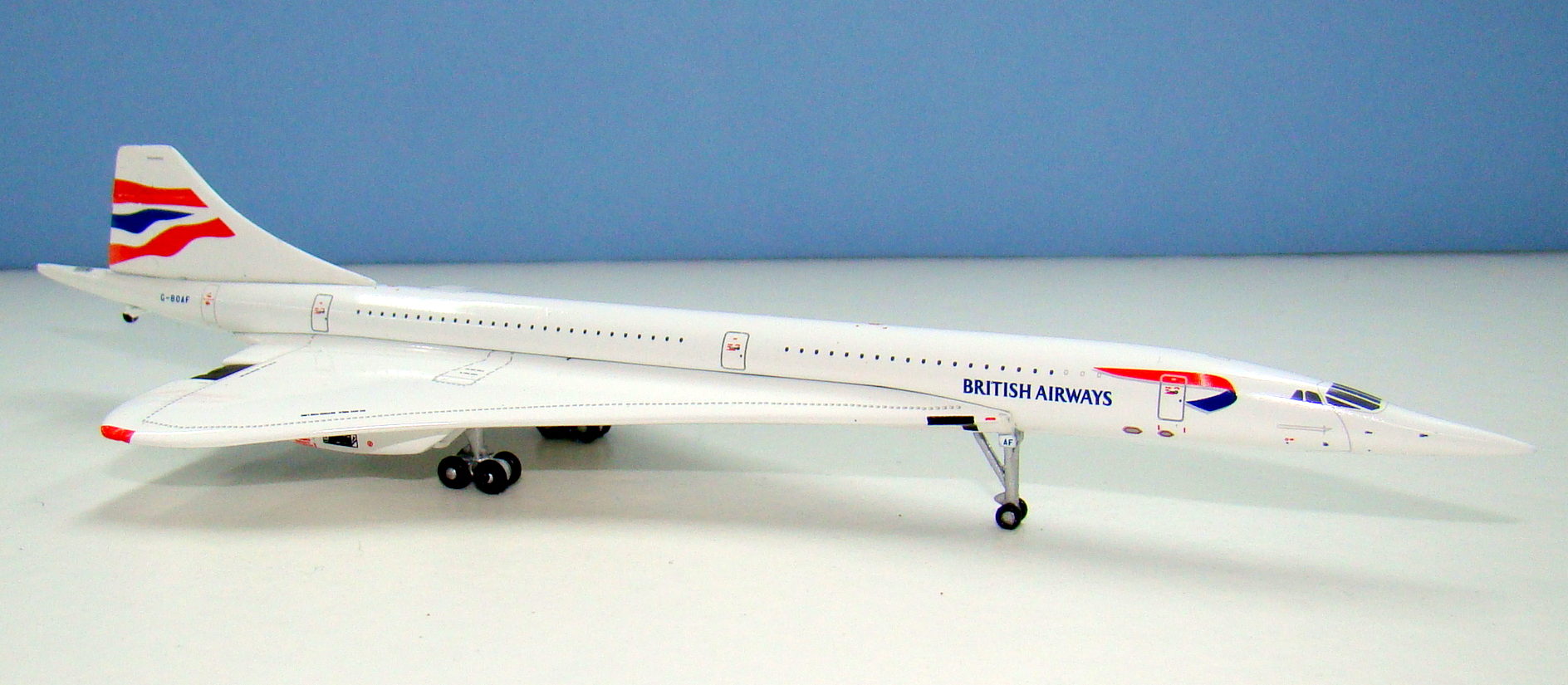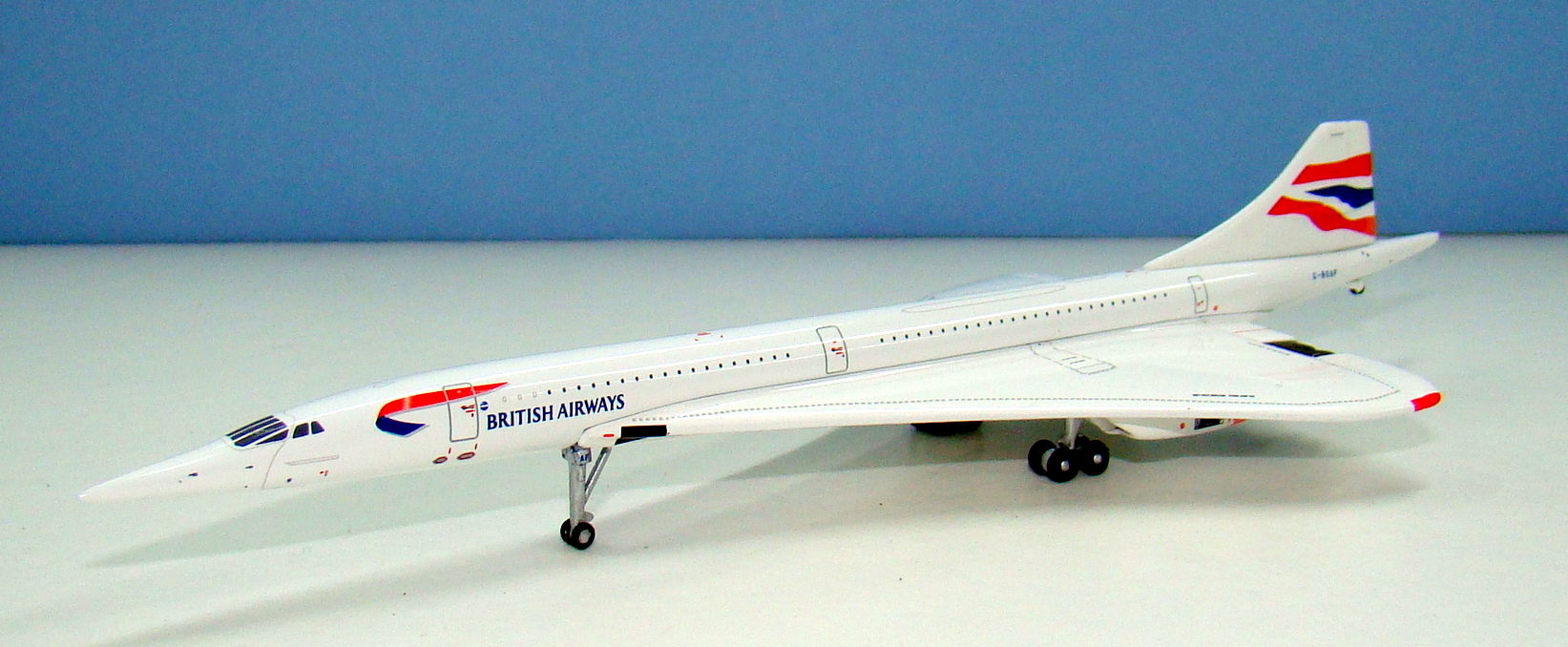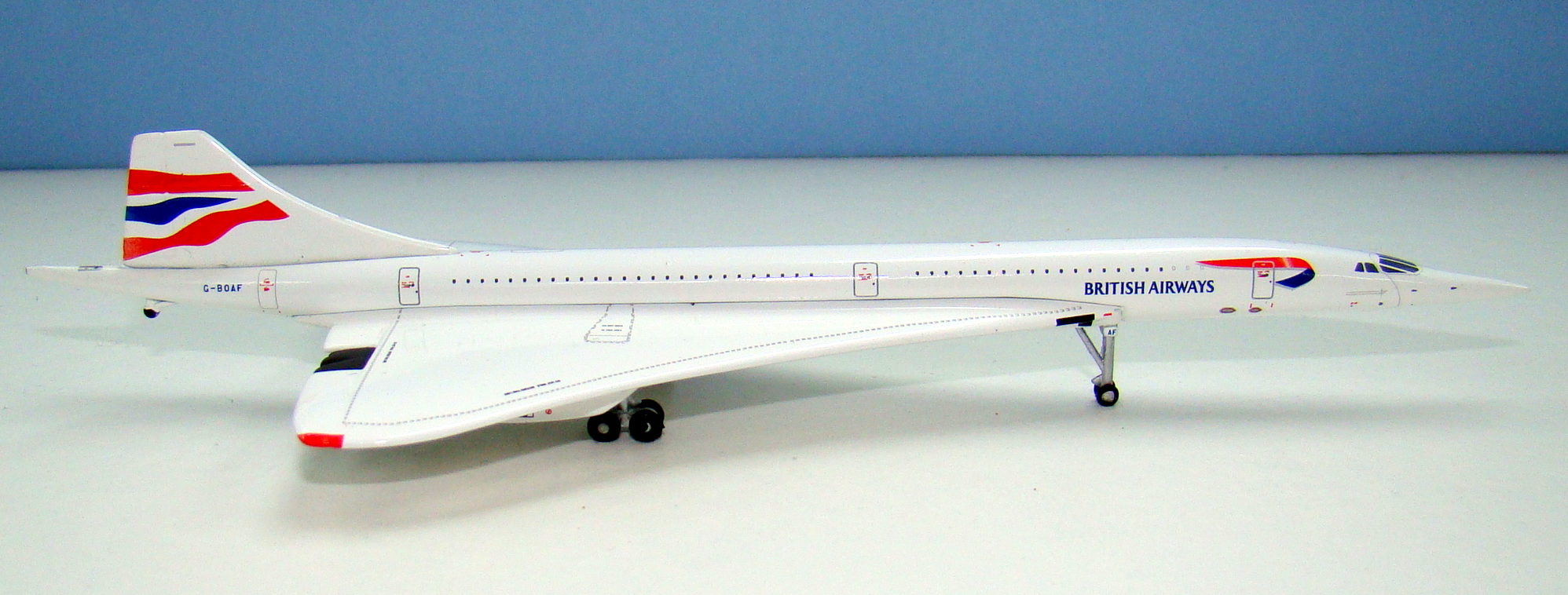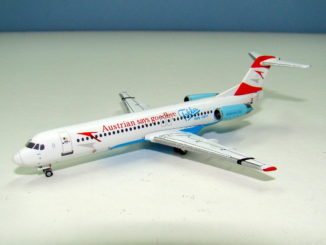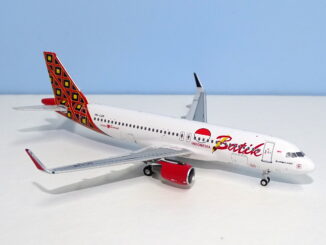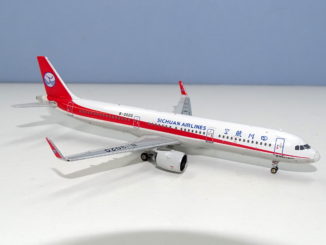
Even nearly fourteen years after British Airways withdrew the Concorde it is still synonymous with grace and luxury in the mind of the general public. Most adults can’t tell a 787 from an A350 but everyone, even children born long after the last flight, can identify Concorde. It’s no surprise then that it continues to be popular in 1/400 scale although given the limited release possibilities you’d be hard pressed to have many in your collection. The latest release is the 22nd BA Concorde in this scale and the 12th to wear the last Union Jack / Chatham Dockyard scheme.
THE REAL THING
What can I say about Concorde that hasn’t already been said? The programme began as just one of multiple supersonic transport initiatives that in the late 1960s were confidently expected to form a considerable chunk of the future airline fleets flying businessmen to and fro, with widebody jets fulfilling the mass transit role for economy class passengers. Concorde was the smallest of the supersonic transports and the only survivor. Even so the economic and environmental (see noise) issues the aircraft faced during the early 1970s almost saw its demise. The healthy order and options backlog the type had dwindled to almost nought as the politics got in the way of a fine design, leaving Air France and British Airways to somewhat reluctantly take on their government’s aircraft.
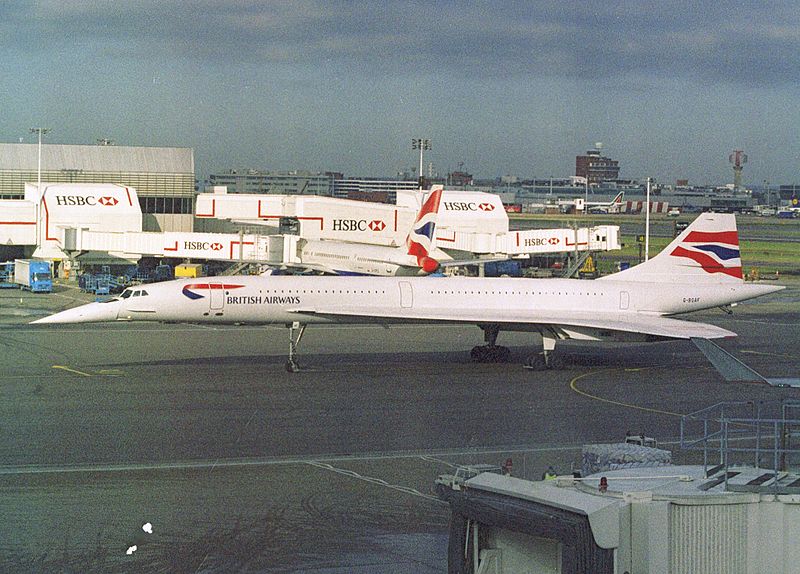
Fortunately the type’s mystique and unique qualities gained it a desirable niche across the Atlantic and over time the host airlines came to find Concorde to be an asset rather than a white elephant, although it must be said BA always seemed to get better use out of its aircraft than Air France. I certainly remember the amazement of seeing Concorde take-off at Heathrow. One experience of driving along the perimeter road when a Concorde unexpectedly roared off the tarmac next to our car was particularly unforgettable to a 10 year old.
As the 21st century dawned I sometimes considered how long Concorde could go on for, especially following the unfortunate crash on July 25, 2000, which was arguably nothing to do with the aircraft itself. The type’s service with BA finally ended on October 24, 2003 and all the airframes were eagerly snapped up by museums around the world.

G-BOAF was the last Concorde produced (and the last Bristol designed aircraft) not flying for the first time until April 20, 1979, more than a decade after the prototype had flown. She has remained within the UK and is currently at Bristol Filton where she is to be the centrepiece of a new Bristol Aviation Heritage Museum scheduled to open this year. See ‘the last Concorde‘ site for more details and a full history of G-BOAF’s career.
THE MODEL
The format for my reviews is to split them into three key areas:
- The mould of the aircraft
- The paint and livery
- Printing and quality control
Each can get a maximum score of 10 for a section giving a maximum combined total score of 30.
THE MOULD
Despite the prominence of Concorde there are few moulds, due to, I assume the paucity of livery options. One of these moulds is by Herpa, which means that releases are few and far between. The vast majority of Concordes have been made by Gemini Jets (and now their partner JC Wings who also have access to the mould). This is a bit of a shame as the Herpa Concorde is much superior to the Gemini one, which dates from at least 2001.
One of the slightly confounding aspects of Concorde releases in 1/400 scale is that although the aircraft itself obviously has multiple different aspects, due to the moveable nose, only one configuration has ever been made. As all the models have their gear down you might expect that they show Concorde as it typically looked on the ground i.e. with the nose at a mid-droop. I always actually preferred this look for some reason and at full droop, for landing, I think the type looked even cooler, like a swooping eagle. Nonetheless both Gemini and Herpa have chosen to show the Concorde with the nose as it would be at supersonic flight i.e. straight. This was occasionally the way the aircraft appeared on the ground but wasn’t typical. I guess I’ll just have to accept this but it does mean that the aircraft doesn’t fit well into airport dioramas or any scene with the gear down. There’s definitely an opportunity for one of the manufacturers to make a more scene appropriate Concorde mould.

This mould is showing its age. In general it looks like a Concorde but both the nose and tail tip are not quite pointy enough (and inferior to the Herpa). The general cockpit angle is also not as good as the Herpa mould. The mould is old and so unsurprisingly a cradle type, though to be fair given the shape of the wings and fuselage width I suspect it’d be very hard to make a slot in wings Concorde mould. The seam line is discrete and not really an issue. The control surfaces are all good and the unique engine pods look great.

The mould’s other major weakness is the landing gear. Both the long thin nosegear and the larger maingear are poorly detailed. The maingear is in fact missing its gear doors entirely. The small tail bumper gear is also rather chunky and undetailed.

Concorde had numerous strakes and bumps, and they are all missing on this mould, most obviously the long low humps atop the rear fuselage (which are present on the Herpa mould). It did also have a single aerial on the roof midline just aft of the L1 door. Interestingly when JC Wings used this mould in 2015 they actually had added the aerial in, yet this new release does not have it attached. There seems to be an odd disjoint between JC Wings and Gemini when it comes to aerials sometimes, and I can only assume this is at the direction of Gemini. It is a shame as the mould looked better with the aerial in place.
I’m certainly not getting on Gemini’s case for using this old mould, however there is no mistaking it is one of their back catalogue that is rather obsolescent. If only Herpa actually used their own Concorde mould this old Gemini could be put out to pasture.
SCORE – 6
PAINT & LIVERY
As I said there have been 12 Concordes released in this livery, although only one of those was G-BOAF and that time she was only released as part of a twinpack with a fantasy BOAC Concorde. This livery of course became the standard BA scheme (albeit with blue belly) following the World tails debacle. I for one loved the World tails and think the ‘Little Britain’ style posturing that came along with them was unseemly and embarrassing. Nevertheless the Chatham Dockyard scheme was a decent compromise and remains a nice livery.
On Concorde of course it is simplicity itself as the aircraft’s supersonic flight profile limited the number of paint colours that could be applied to the fuselage. Gemini should be able to do this livery in their sleep and they pull it off here without undue difficulty. Everything is where it ought to be aside from the aircraft registration, which looks to me slightly too far aft. It’s not a biggie.
SCORE – 9
PRINTING & QUALITY CONTROL


I actually happened to, until recently, own the first version Gemini did of G-BOAF and comparing the two it is a pleasure to see the vast improvement in printing quality between them. This new model has much more printed detail and much finer lines. Especially improved are the cockpit windows and droop nose join marks, but right across the board this model is a beauty when it comes to printing. All the markings under the nose and ahead of the nosegear are particularly lovely.
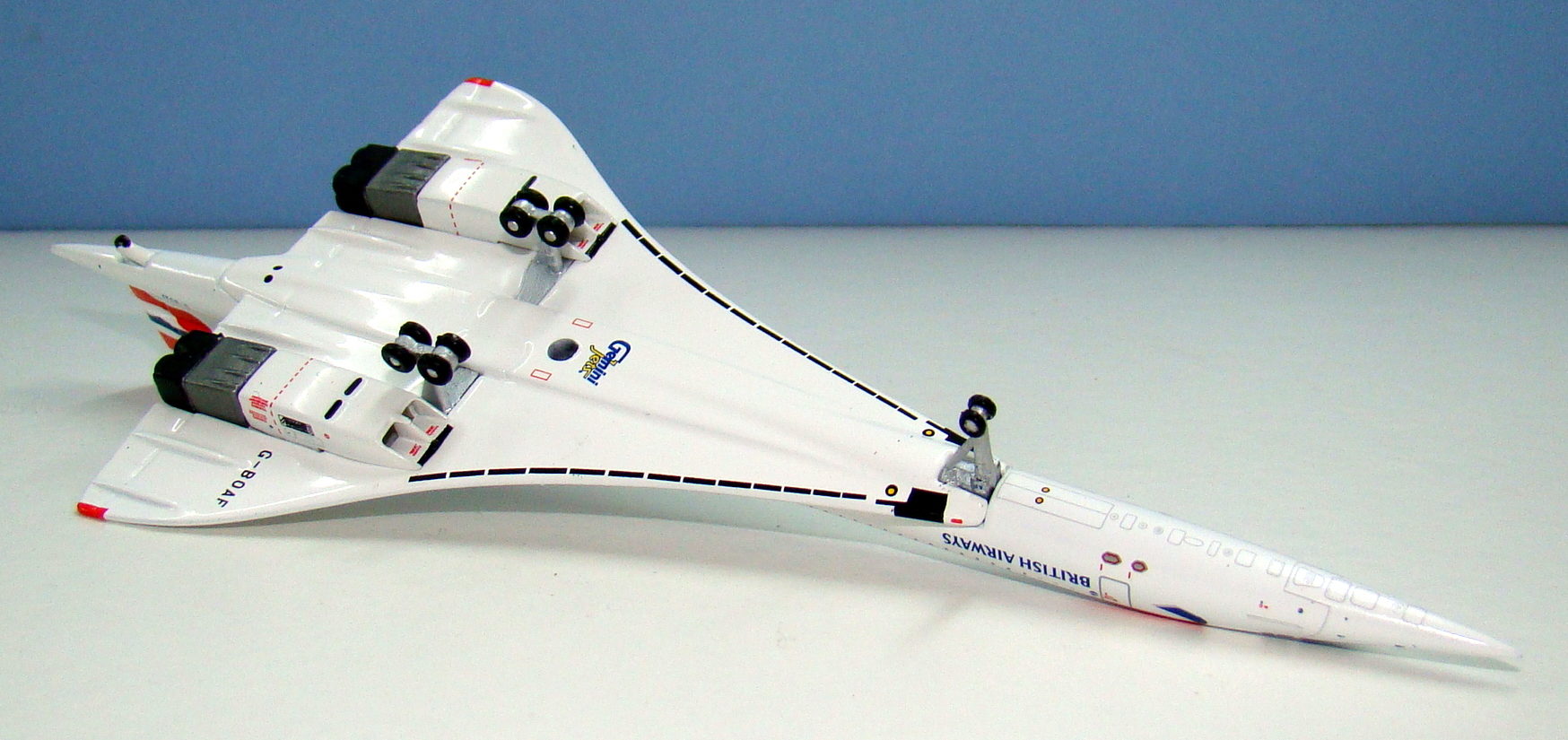
As with the Gemini 757 being an older mould it is a relatively simple one to build so as you’d expect it is well built and solid. No rolling gears, but that’s never bothered me. It is a shame therefore that the painting of the tailbumper tyre is so shoddy, worse than that on the old 2004 G-BOAF release in fact. That’s just lazy. I should also point out that the port side nosegear door on the model is for some reason silver, rather than white. The starboard side is correctly white. Since the maingear doors are missing I can’t point out that they too should be white!
SCORE – 8
CONCLUSION
In some ways this model is a major improvement over older Gemini Concordes, however the failure to add the aerial and some laziness around the gear remind you how inferior the mould in general is to the Herpa. If you don’t have any Concordes then I guess this is a decent release but it doesn’t really do the supersonic jet the justice it deserves and in every way the Herpa version is the winner.
FINAL SCORE – 23


